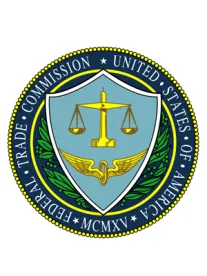As we previously reported last year, native advertisements represent an increasingly popular and effective means of promotion for marketers that also presents a major challenge for the Federal Trade Commission (“FTC”), an organization whose primary duty is to protect consumers from false and misleading advertising. Native advertising, also known as corporate content or branded journalism, features marketing material that is designed to mimic the look and feel of the host website. While the look of native advertisements differs depending on the host website, the underlying goal for marketers is the same — to make the advertisement look and feel like editorial content.
In an effort to fully understand and address the issues surrounding this new style of digital marketing, the FTC hosted a workshop in December 2013 entitled “Blurred Lines.” The workshop recognized that the FTC is tasked with balancing two competing interests, namely transparency for consumers and allowing businesses to enjoy the competitive edge of native advertising. Last December 2014, the Interactive Advertising Bureau (“IAB”) held a meeting to examine “[w]hat has changed in the past year [since the 2013 FTC workshop], what we have learned, and what might transpire in 2015?” The speakers included IAB and industry leaders, including an FTC staff attorney.
Both the FTC and the non-FTC panelists that represented the business sector agreed that consumers viewing native advertising must be able to easily distinguish between editorial content and advertising that attempts to sell them something. It was agreed that it is important that all parties involved with native advertising take steps to prevent consumer deception. Specifically, the FTC wants to fulfill its mandate to protect consumers while businesses support the idea of transparency as a means to maintaining consumer loyalty and confidence.
However, the call for transparency must be balanced with the business advertising sector’s strong desire to remain competitive in the marketplace. Unlike other forms, more traditional forms of advertising, native advertisements allow publishers to customize advertising content and businesses to present their products and services in a more attractive way for consumers. Native advertisements are generally accompanied with labels like “sponsored by”, “posted by” or “suggested posts”, completely eliminating the word “advertisement”, which consumers generally disfavor. Additionally, the ability to customize these advertisements allows businesses to target specific audiences and encourages user participation. Most importantly, native advertisements provide publishers with a means to measure consumer responses.
The 2013 FTC and 2014 IAB workshops demonstrate that the willingness to discuss issues surrounding native advertisements has not subsided, it remains unclear exactly how and when the FTC will respond to the growth in native advertising and specifically whether the FTC will promulgate new guidelines to regulate this advertising practice. While there appears to be consensus between the FTC and non-FTC advertising players that paid advertisements need to be labelled properly, the concern and challenge remains to create a labeling protocol that alerts consumers to the advertisement but does not unnecessarily impinge upon a publisher’s ability to manage the look and feel of its content. At the IAB 2014 workshop, panelists speculated that the FTC might be planning to provide guidance on the issue. In an IAB blog interview in January 2015, Mike Zaneis, the IAB’s Executive Vice President Public Policy & General Counsel, commented: “It is hard to predict what type of guidance they may issue in the future, but the focus on multiple business models during their 2013 native advertising town hall is a clear indication of the scope of their interest.” The IAB disclosure principles published in December 2013 provide that “[r]egardless of native advertising unit type for paid native ad units, clarity and prominence of the disclosure is paramount.” The IAB disclosure principles state further: “Simply put: Regardless of context, a reasonable consumer should be able to distinguish between what is paid advertising vs. what is publisher editorial content.” To further complicate matters, any future FTC guideline or regulation regarding native advertising must work for a huge variety of advertisements that significantly differ in content, look, feel, function, etc., depending on the host website. Currently, the FTC applies the “clear and conspicuous” disclosure rule to online advertising, including native adverting, but the continuation of the discussion between the FTC and advertisers demonstrates that more guidance is needed.
While it is clear that native advertising grows in importance each day as online commerce continues to expand exponentially and it is predicted that spending on native advertising will exceed $4.3 billion in 2015 just in the United States, it is unclear whether and when the FTC will issue native advertising guidelines or regulations. It also is not clear whether and when publishers and businesses will have an opportunity to comment on any proposed guidelines or if the FTC will even provide a comment period. As of our last report on this issue, the FTC has yet to make meaningful progressive since the “Blurred Lines” workshop in 2013, but we will continue to report on the FTC’s progress regarding native advertising and any developments related the FTC regulation of the practice as it develops.



 />i
/>i
